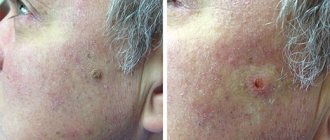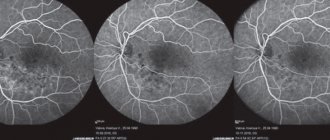09 October 2020
There are two large groups of bacteria - gram-positive and gram-negative. The name comes from their Gram staining ability. This method is named after the developer himself, H. C. Gram, who discovered the method in 1884. And already in 1886, Emil Roux proved that not all bacteria stain the same, and then this division into classes occurred. The difference lies in the structure of the cell wall. This laboratory test is still the standard for bacterial differentiation in microbiology.
Definition
Bacteria are microscopic organisms that are invisible to the naked eye. Microbial cells inhabit the planet, live in the human body, space beyond, in various environments, from hot water to ice. Some of them are beneficial, while others cause infectious diseases.
Gram-positive and gram-negative bacteria are single-celled or simple organisms, without which life on earth and human existence are impossible. Despite their microscopic size, they are powerful and complex organisms that can survive in extreme conditions.
They have a durable protective coating that increases their resistance to white blood cells in the body. A person contains 10 times more microorganisms than cells.
Implications for medicine
The etiological test developed by Gram turned out to be in demand not only in microbiology. The information gained from him also advanced medicine to new levels, especially the treatment of patients infected with gram-negative bacteria. Despite the fact that doctors classify gram-negative bacteria (gram-negative rods) as opportunistic microflora, it is a mistake to consider them harmless. They cause a violent response from the body and have high resistance, which often leads to death.
Patients experience severe inflammation of the bronchopulmonary system. It is caused by LPS, or the lipopolysaccharide layer of bacteria, which gram-positive microorganisms lack. Microbiology defines this component of the cell membrane as an endotoxin for the human body, regardless of the form of the bacterium: spirilla or rod. Once inside, it activates the synthesis of cytokines and the immune response.
As a result, localized inflammation begins to develop. Over time, toxins enter the bloodstream and are further distributed by the transport system throughout the body. The patient begins to experience increasingly increasing signs of intoxication. Respiration rate and body temperature increase, blood pressure drops. Toxic shock occurs, which, if left untreated, ends in death.
Thanks to Gram's discovery, doctors were able to find an alternative to penicillin and lysozyme, which are ineffective in such cases. For example, combining the latter with ethylenediaminetetraacetic acid, or EDTA. Successful clinical trials of ampicillin, streptomycin, chloramphenicol and nalidixic acid in the fight against gram-negative bacteria also helped.
Yulia Pyatirubleva
What are there
Single-celled microorganisms do not have a formed cell nucleus, and their genetic material floats freely in the cytoplasm. They differ in the nature of the cell walls, in shape and in the genetic mechanism of variability.
Forms
Bacteria exist in the following forms:
- commas - for example, Vibrio cholera;
- spherical (cocci) – staphylococcus and streptococcus;
- rod-shaped (bacillus) - E. coli and salmonella;
- spiral (Spirilla) – Treponema and Borellia;
- Flagellate – tetanus bacteria.
Gram-positive and gram-negative bacteria
Some organisms have more complex shapes, such as stalked, square, or star-shaped.
In relation to oxygen
- Aerobic, which requires oxygen gas to complete its own energy cycle. These microorganisms cannot grow without oxygen.
- Anaerobic, which do not need oxygen to carry out metabolic functions; moreover, it is toxic to most of them.
- Facultatively anaerobic are microorganisms that do not require the presence of oxygen to grow or produce energy; they can use it, but can grow at the expense of anaerobic organisms; such bacteria are characterized by a high degree of adaptation.
- Microaerophilic, which grow better in an atmosphere with low oxygen content.
A bacterial cell is surrounded by 2 protective membranes: an outer cell wall and an inner cell membrane. Some bacteria, such as mycoplasma, do not have a cell wall.
Other microorganisms may have a third, outer protective layer called a capsule. Tail-like projections often cover the surface of bacteria—long ones called flagella or short ones called pili—that help them move and attach.
Types
Gram-positive and gram-negative bacteria are determined by the Gram staining method. This is a common method used to differentiate microorganisms based on their different cell wall components.
| Types of Gram-positive bacteria | Properties |
| Actinomycetes | They are responsible for the occurrence of caries and filamentous respiratory diseases. |
| bacilli | Associated with food poisoning |
| Clostridium | They have different strains that cause food poisoning, botulism, gangrene and tetanus. |
| Corynebacteria | The main group is not pathogenic for humans, but one of them is the causative agent of diphtheria. |
| Enterococci | They cause diverticulitis and endocarditis, but are quite resistant to many antibiotics. |
| Gardnerella | They are associated with vaginitis. |
| Lactobacilli | This genus of bacteria contributes to the formation of vaginal microflora. |
| Listeria | One of this genus of bacteria is dangerous to humans, is a pathogen of the fetus, and is responsible for meningitis in newborns. |
| Mycoplasma | This genus of bacteria does not have a cell wall and causes walking pneumonia. |
| Mycobacteria | They can cause tuberculosis. |
| Streptococci | They are causative agents of pharyngitis, some of them affect complications during pregnancy. |
Gram-positive bacteria do not have an outer membrane, unlike gram-negative bacteria. It is for this reason that the latter microorganisms are more resistant to antibiotics. If the infection is caused by gram-negative organisms, a strong dose of antibiotics and strict adherence to treatment will be required to completely get rid of the harmful bacteria.
| Types of Gram Negative Bacteria | Properties |
| Bortadella | They are short rod-shaped organisms, the whooping cough bacillus. |
| Chlamydia | This small parasitic bacterium is similar to a virus and is the cause of diseases such as psittacosis, trachoma and nonspecific urethritis. |
| Enterobacteriaceae | It belongs to a genus of anaerobic, non-spore-forming bacteria and can cause urinary tract infections, soft tissue infections, septic arthritis, central nervous system infections, osteomyelitis and more. |
| Helicobacter | This type of bacteria is rod-shaped and causes peptic ulcers. |
| Klebsiella | The rod-shaped bacterium causes hemorrhagic pneumonia. |
| Neisseria | Microbes of this species colonize the mucous membranes, and their pathogenic forms are the causative agent of bacterial meningitis. |
| Proteus | This rod-shaped bacterium causes urinary tract and kidney infections. |
| Pseudomonas | This is a genus of aerobic bacteria with high metabolic activity. |
When bad microbes enter the human body, they begin to actively multiply, release toxins, damaging body tissues and causing illness. Harmful bacteria are called pathogenic bacteria and cause diseases such as sore throat, staph infections, cholera, tuberculosis and food poisoning.
What is the difference
Gram stain is a very important laboratory test. It opens the way to the differentiation of 2 different types of bacteria - gram-positive and gram-negative. This is a faster method than bacterial culture and is very important in determining an initial “working” diagnosis of certain disease conditions.
Most bacteria use macromolecules (peptidoglycan) in their shell. This molecule is also known as murein. The cell wall, consisting of peptidoglycan, is extremely stable.
Based on the thickness of the murein layer, 2 main bacterial forms are determined:
- Gram-positive, which have a thick reticulate cell wall consisting of peptidoglycan (50-90% of the cell wall).
- Gram-negative, having a thinner layer (10% of the cell wall). Structures of this species have an additional outer membrane containing lipids and are separated from the cell wall by a periplasmic space.
The staining method is based on the difference in the structure of the bacterial cell wall. A smear with bacterial cultures is stained with purple dye crystals for 2-3 minutes.
Crystal violet is a positively charged aniline dye that breaks down into ions when exposed to water. After adding a bleaching agent, acetone or alcohol, the lipids of the cellular structures begin to interact with the dye.
Gram-negative microbes lose their outer membrane because the ion complexes are washed out along with it.
Gram-positive bacteria cannot be easily bleached because the dye complex adheres very strongly to murein layers and alcohol cannot penetrate the thick cell wall of gram-positive bacteria.
The next step is the actual differentiation, which is carried out by contrast staining with safranin.
In this case, gram-negative bacteria turn red or red-orange, and gram-positive microorganisms are indicated in dark purple. Spherical forms of microbes are usually gram-positive types, while curled forms are negative. Rod-shaped bacteria can be gram-negative or gram-positive.
Properly performed Gram staining is a very informative and rapid method of differentiating various bacteria.
| Gram-positive microbes | Gram-negative microbes |
| Cell wall | |
| Single layer smooth | Double layer wavy |
| Cell wall thickness | |
| from 20 to 80 nanometers. | from 8 to 10 nanometers. |
| Peptidoglycan layer | |
| Thick layer, can be multi-layered | thin layer, often single layer. |
| Teichoic acids | |
| Present | None |
| Outer membrane | |
| No outer membrane | Outer membrane present (mostly) |
| Porins | |
| None | Found in the outer membrane |
| Mesosoma | |
| More visible | Less noticeable |
| Morphology | |
| Cocci or spore-forming rods | Rods that do not form spores |
| Structure of flagella | |
| 2 rings in the basal body | 4 rings in the basal body |
| Lipopolysaccharide | |
| Absent | Available |
| Lipid content | |
| Very low | From 20 to 30% |
| Antibiotic resistance | |
| More susceptible | More durable |
| Gram staining | |
| Bacteria retain a crystalline purple color even after being washed with acetone or alcohol | These bacteria do not retain the color of the stain even after being washed with acetone or alcohol, and appear pink when examined under a microscope. |
Gram-positive and gram-negative bacteria respond differently to certain antibiotics due to differences in cell wall structure. Therefore, doctors first need to know what cellular organisms they are dealing with in order to further identify the right drugs.
Features of microflora
A significant number of different microorganisms constantly live in the human body. Their presence ensures the normal functioning of all systems and organs.
Microorganisms, such as bacilli and cocci, are found in the mucous membranes of the mouth, nose, intestines, and in women also in the vagina.
In a normal state, when the immune system performs its functions in full, a balance is maintained between beneficial and pathogenic bacilli.
The cells of the mucous membrane contain glycogen, which serves as food for bacteria. Depending on the form, microorganisms are defined as rods and cocci, having a positive or negative gram reaction.
In modern gynecology, a smear is considered one of the methods for identifying the pathology of the female reproductive system. The microflora of the female genital organ includes mainly lactobacilli or gram bacilli.
All rods living in the vagina of women are divided into the following groups:
- obligate;
- transient;
- optional.
Obligate rods include those that are constantly, in the required quantity, present in the mucous membrane of the female genital organ. The sticks create a protective barrier that prevents the penetration of pathogenic microorganisms.
Transient cocci and bacilli include those that accidentally enter the vaginal mucosa. Among such representatives there may be beneficial, neutral, and pathogenic species.
Gram rods, which are examined after taking a smear, carry information about the properties of the microorganism.
Facultative microbes are not found in all women and this is a kind of norm. The qualitative composition of microflora depends on several factors.
Changes occur during menstruation, with age and with diseases of the genital area. There is a clear dependence on climate, intimate hygiene and the state of immunity.
The physiology of the female reproductive system is designed in such a way that lactobacilli and bifidobacteria mainly live and develop on the walls of the vagina.
In healthy women, these rods form an acidic environment in the vagina. In an acidified environment, the reproduction and development of other bacteria becomes impossible.
Thanks to this protective mechanism, a healthy environment is maintained in the vagina. An important feature of the rods is the ability to firmly attach to the mucous membrane, creating a reliable barrier to pathogenic bacteria.
A smear, when taken from women for preventive purposes, almost always shows a positive gram reaction.
READ Increased leukocytes in a smear in women
When the normal state of microflora is disrupted, vaginal dysbiosis appears and develops.
Pathogenic bacilli and cocci are found in significant quantities. Accordingly, gram rods in the smear will have a negative sign.
This condition is usually caused by hormonal imbalance, long-term treatment with antibiotics, infectious infections and poor hygiene.
Dysbacteriosis often develops when the immune system is weakened. Treatment is carried out individually and only after the gynecologist takes a smear and makes the correct diagnosis.
Why are they needed?
There are many types of bacteria that benefit humans:
- Microbes in the gut break down many of the proteins, lipids and carbohydrates into nutrients that you then absorb. Moreover, the microbes produce beneficial compounds, such as vitamins and anti-inflammatories, that the human genome cannot produce. Millions of bacteria inhabit the human digestive system, which help digest food and produce vital vitamins such as biotin and vitamin K.
- Bacteria in the gut work with the immune system to protect the body from disease.
- Microorganisms found inside the stomach help maintain the pH and acidity levels in the stomach.
- Protect the skin. The many bacteria on the skin (almost 200 different species in a healthy person) control the skin's environment and resources, preventing other harmful microbes from gaining a foothold.
- Beneficial bacteria that can produce oxygen are used to create antibiotics.
- Bacteria are used in food production to make yoghurts and fermented foods.
Chemical disinfection
The chemical treatment method is universal and most effective for various fields of activity. All products from the Septolite line from the Satellite company are suitable for killing bacteria. All products are certified and have high antimicrobial activity. It is suitable for processing surfaces and tools. The online store also offers products for express treatment and hand disinfection.
Various concentrations and exposure times in solution can provide both bacteriostatic and bactericidal effects on pathogenic strains of bacteria. On the website you can familiarize yourself with the products and detailed instructions written in accessible language. We care about the health of our clients. With Satellite products you can be 100% sure of safety.
Return to list of publications
Why are they dangerous?
Although there are many more good microorganisms than bad ones, some bacteria are harmful. When a person comes into contact with harmful organisms, they can enter the body, where they begin to rapidly multiply and release toxins that damage body tissues, causing illness.
Bad bacteria are called pathogenic because they cause diseases such as sore throat, staph infections, cholera, tuberculosis and food poisoning.
Some types of gram-positive bacteria can cause serious infectious diseases:
- Urinary tract infections.
- Tuberculosis.
- Diphtheria.
Infections caused by gram-negative bacteria:
- Pneumonia.
- Meningitis.
- Peritonitis.
- Blood infections.
Gram-positive phytopathogenic bacteria
In the ninth edition of Bergey's Guide to Bacteria, Gram-positiveGram-positive bacteria are bacteria that retain color without discoloring...bacteria that have cell walls are classified as the phylum Firmicutes. These include some phytopathogenic bacteria. Bacteria are grouped into the kingdom Eubacteria or Bacteria. The kingdom is divided into several types: Gr...:
- Clavibacter michiganensis subsp. michiganensis – the causative agent of bacterial canker of tomato;
- Streptomyces scabies is the causative agent of common potato scab. Potato, or tuberous nightshade (from the Latin Solánum tuberósum), is a species of perennial...
Method for determining “gram-positive” and “gram-negative”
If there are signs of infection in the body, the doctor will prescribe a Gram stain. This is necessary to determine the type of infection: bacterial, viral, fungal or parasitic, since each type is treated differently.
A sample for research can be in the form:
- sputum coughed up from the lungs;
- urine collected in a special container;
- blood donated in the laboratory;
- saliva;
- vaginal smears;
- feces
Using certain techniques, the type of microorganisms in the pleural and peritoneal fluid is determined.
The laboratory technician uses a special staining technique to make the cellular organisms easier to see under the microscope. If the Gram stain results are negative, it means that no bacteria were found in the sample. If positive, microorganisms were present. The results will also include information about the shape of the bacteria, which can indicate the type of infection.
Although the results may not identify the exact type of bacteria, they help the doctor get closer to figuring out what causes the disease and how best to treat it.
Gram stain results may also show the presence of a fungal infection (yeast or mold).
When treating diseases caused by gram-positive organisms, the doctor needs the following information:
- type of bacteria;
- antimicrobial resistance;
- whether bacteria produce toxins.
Pathogenicity
Most microorganisms pathogenic to humans are Gram+. Six genera of Gram+ organisms are typical human pathogens. Two of them, streptococci and staphylococci, are cocci (spherical bacteria. Bacteria are united in the kingdom Eubacteria or Bacteria. The kingdom is divided into several types: Gr...). The rest are rod-shaped and divide further to form spores.
Non-spore-forming: Corynebacterium and Listeria; spore-formers: Bacillus and Clostridia. Spore-formers can be divided into facultative anaerobesAnaerobes are microorganisms, including bacteria, energy process... Bacilli and obligate anaerobesAnaerobes are microorganisms, including bacteria, energy process... Clostridia.
Imbalance
Gram-positive and gram-negative bacteria live in almost all parts of the human body, on the skin, intestines, mouth and nose. Sometimes they cause disease, but in most cases microorganisms live in harmony with their hosts, providing vital functions necessary for human survival.
Reasons why the balance is disturbed:
- Poor diet and poor food choices.
- Excessive use of antibiotics.
- Lack of sleep.
- Emotional stress.
Overpopulation of one type of bacteria leads to infections and other health problems. With a decrease in good microorganisms in the intestines, the protective barrier is lowered, which allows harmful bacteria, toxins and large protein molecules to enter the body.
What happens when bad bacteria over-colonize:
- Intestinal permeability increases.
- Bad bacteria spreads into the urinary system, causing a urinary tract infection.
- Fatigue increases due to toxin overload.
- The activity of the immune system decreases, which contributes to the development of allergies and diseases associated with an autoimmune reaction, such as Crohn's disease, ulcerative colitis, rheumatoid arthritis, skin infections and vaginal tract infections.
- Diarrhea develops due to an intestinal reaction to harmful bacteria.
Bacteria are also present in healthy lungs. When the delicate balance of bacterial populations in the lungs is disrupted, it can lead to the development of diseases such as asthma and chronic obstructive pulmonary disease.
The main attention should be paid to the consequences of an imbalance in the microbial balance in the digestive system. It can have negative consequences not only for the gastrointestinal tract, but also for the nervous, metabolic and immunological systems.
Therefore, maintaining balance in the eternal battle between “good” and “bad” bacteria, both gram-positive and gram-negative microbes, is the path to health and wellness.










